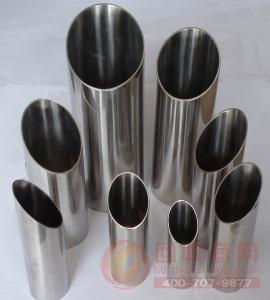
At present, there are three methods for smelting stainless steel in the world, namely one-step method, two-step method and three-step method.
One-step method: that is, electric furnace one step smelting stainless steel. Due to the demanding requirements of the one-step method for raw materials (returning stainless steel scrap, low-carbon ferrochrome and metal chromium), the raw materials and energy media in production are high in consumption, high in cost, long in smelting cycle, low in productivity, low in product variety, poor in quality, and lining life. Short, refractory consumption is high, so this method is rarely used to produce stainless steel.
Two-step method In 1965 and 1968, VOD and aOD refining units were successively produced, which played a decisive role in the transformation of stainless steel production processes. The former is vacuum oxygen decarburization, and the latter is decarburized by diluting the gas with argon and nitrogen. Combining any of these two refining facilities with an electric furnace creates a two-step process for producing stainless steel.
The electric furnace and VOD two-step steelmaking process are more suitable for stainless steel production of small-scale and multi-variety compatible factories.
The use of electric furnace and aOD two-step steelmaking process to produce stainless steel has the following advantages:
1. The aOD production process has lower requirements on raw materials, and the electric furnace tapping can contain C of about 2%. Therefore, cheap high carbon FeCr and 20% stainless steel scrap can be used as raw materials, which reduces operating costs.
2, aOD method can be used in one step to make the carbon channel in the steel water 0.08%. If the smelting time is extended and the amount of ar is increased, the steel water can be further removed to 0.03% or less, except for ultra-low carbon. In addition to ultra-low nitrogen stainless steel, 95% of the varieties can be produced.
3 stainless steel production cycle is relatively short VOD, and the flexibility is better.
4. The total investment in production system equipment is higher than VOD, but less than the three-step method.
5, aOD furnace production in one step into steel, fewer personnel, less equipment, so the overall cost is lower.
6, aOD can use C1.5% less than the initial steelmaking water can therefore be used low-cost high-carbon FeCr, FeNi40 and 35% carbon steel scrap for the ingredients, the raw material costs are lower.
The disadvantages are:
1. The furnace lining has a short service life.
2. The cost of reducing ferrosilicon is large.
3. At present, it is not possible to produce ultra-low C, ultra-low nitrogen, stainless steel, and the gas content in steel is relatively high.
4. The consumption of argon is large.
At present, 88% of the world's stainless steel is produced in a two-step process, of which 76% is produced by aOD furnace. Therefore, it is more suitable for use in large stainless steel professional factories.
Three-step method: electric furnace double blow converter VOD three-step smelting stainless steel. Its characteristic is that the electric furnace is used as the melting equipment, and it is only responsible for supplying the semi-finished molten steel containing Cr and Ni to the converter. The main task of the double-blown converter is to rapidly decarburize by blowing oxygen to achieve the purpose of maximizing the recovery of Cr. VOD vacuum blowing is responsible for further decarburization, degassing and fine tuning of ingredients. The three-step method is more suitable for areas where argon supply is relatively scarce, and uses hot metal with high carbon content as raw material, and adopts professional factories with large proportion of low C and low N stainless steel.
Steel Structure Fireproof Coating
Fire Retardant Paint For Steel,Sensational Fireproof Coating,Shockproof Coating Product,Indoor Steel Structure Fireproof Coating
Jiangxi Long Zheng Techinical Developing (Pty) Ltd. , https://www.jxlongzhengkeji.com